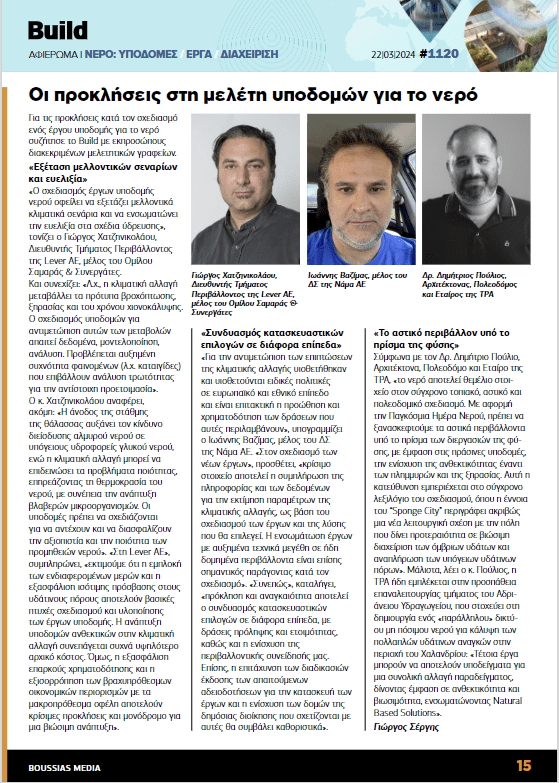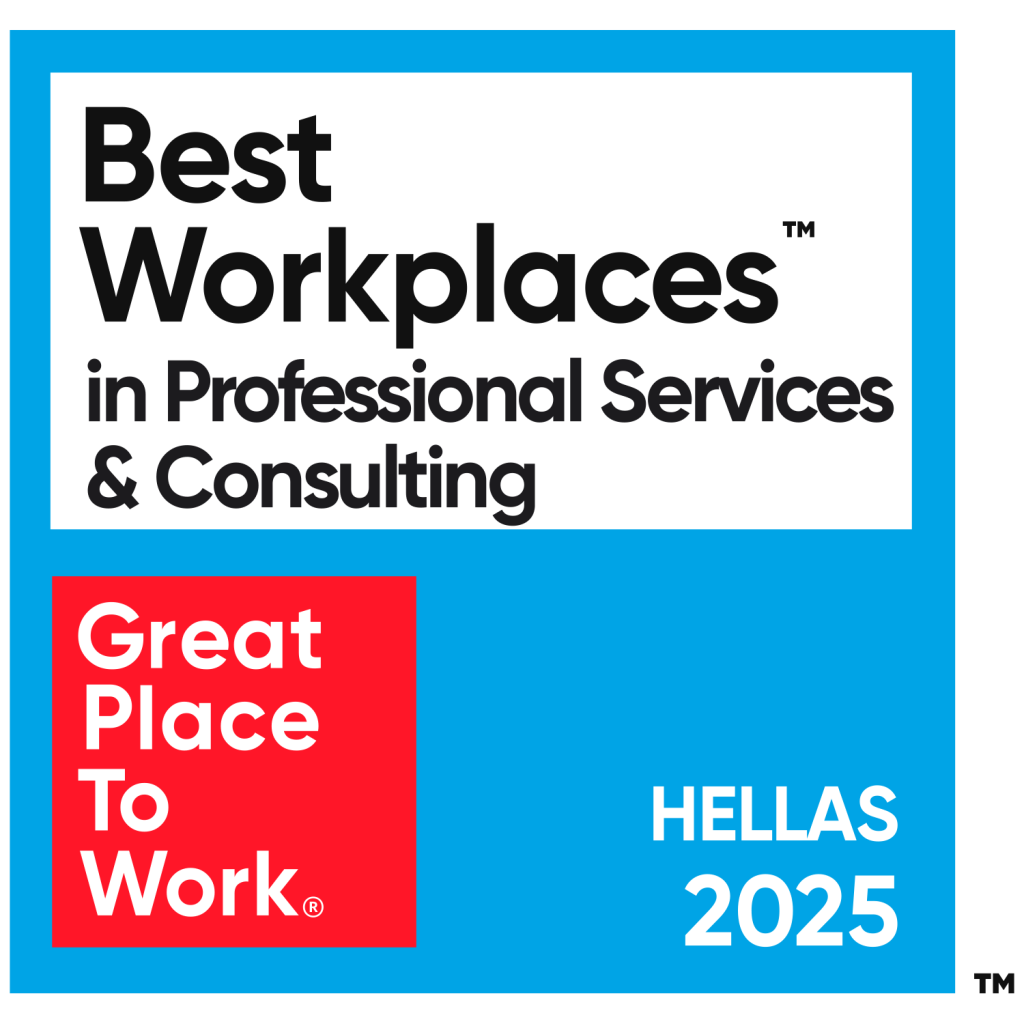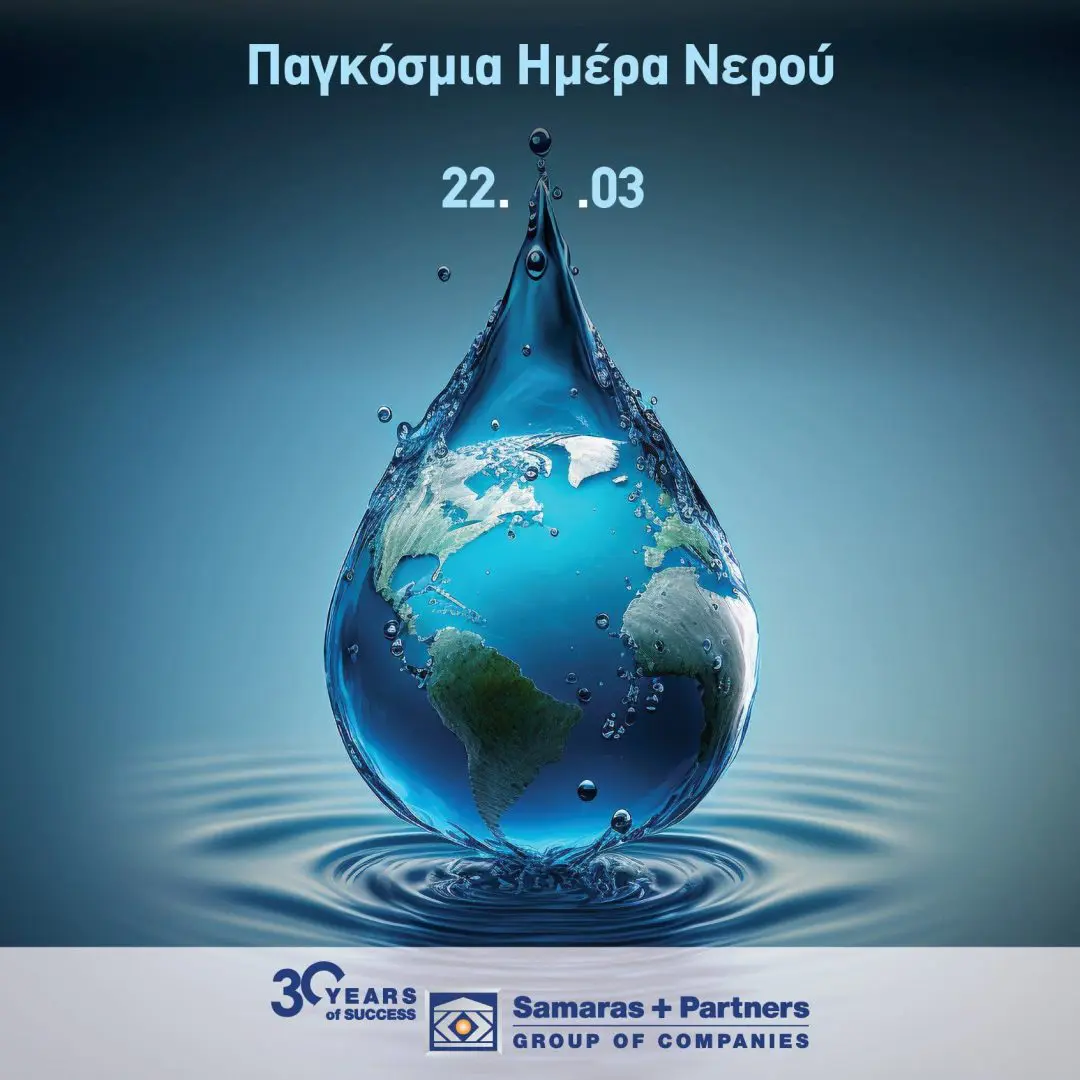On the occasion of World Water Day, the insights of Mr. Giorgos Chatzinikolaou, Environmental Scientist, MSc, PhD in River Ecology, from the Environmental Department of Lever – Development Consultants S.A., along with contributions from representatives of prominent Greek consulting firms, were published in Build magazine. The discussion focused on the major challenges involved in designing water infrastructure projects, especially under the increasing demands of climate change adaptation.
“Examining Future Scenarios and Ensuring Flexibility”
“Water infrastructure design must incorporate future climate scenarios and integrate flexibility into water supply planning,” emphasizes Giorgos Chatzinikolaou, Head of the Environmental Department at Lever – Development Consultants S.A., a member of the Samaras & Associates Group.
He continues:
“For example, climate change alters patterns of rainfall, drought, and snow cover duration. Designing infrastructure to address these changes requires data, modeling, and analysis. We expect increased frequency of extreme weather events (e.g., storms), necessitating vulnerability analysis and preparedness.”
Mr. Chatzinikolaou further states:
“Rising sea levels increase the risk of saltwater intrusion into freshwater aquifers, while climate change can exacerbate water quality issues by affecting temperature and promoting the growth of harmful microorganisms. Infrastructure must be designed to withstand these changes and ensure reliable, high-quality water supplies.”
“At Lever – Development Consultants S.A.,” he adds, “we believe that stakeholder engagement and ensuring equitable access to water resources are fundamental elements in the design and implementation of infrastructure projects. Developing infrastructure that is resilient to climate change often involves higher initial costs. However, securing adequate funding and balancing short-term financial constraints with long-term benefits are critical challenges—and the only viable path toward sustainable development.”

“Combining Construction Options, Accelerating Permitting”
“To address the impacts of climate change, special policies have been and are being adopted at both European and national levels. Promoting and financing the actions included in these policies is imperative,” says Ioannis Vazimas, Board Member of Nama S.A.
“In designing new projects,” he adds, “it is essential to fill data gaps and assess climate change parameters as a basis for design and solution selection. The integration of large-scale technical projects into already built environments is also a major factor in planning.”
“Therefore,” concludes Mr. Vazimas, “a key challenge and necessity is the combination of construction options at various levels with preventive and preparedness actions, as well as the strengthening of environmental awareness. Additionally, speeding up the permitting process and reinforcing the public administration structures involved will be crucial to ensure these projects become operational as soon as possible.”
“Urban Environments Through the Lens of Nature”
According to Dr. Dimitrios Poulios, Architect, Urban Planner, and Partner at TPA,
“Water is a foundational element in modern landscape, urban, and spatial planning. On World Water Day, we are called to reconsider urban environments through the processes of nature, emphasizing green infrastructure, enhanced flood and drought resilience.”
“This direction is part of today’s planning vocabulary, where the concept of the ‘Sponge City’ represents a new functional relationship with the city—prioritizing sustainable stormwater management and groundwater replenishment.”
Mr. Poulios notes that TPA is already involved in the initiative to reactivate part of the ancient Hadrianic Aqueduct, aiming to create a ‘parallel’ non-potable water network to meet the multiple water needs in the area of Chalandri.
“Such projects can serve as models for a paradigm shift, emphasizing resilience and sustainability through the incorporation of Nature-Based Solutions. Overall, integrating water into urban planning can address urgent urban challenges and enrich the quality of life in modern cities.”







